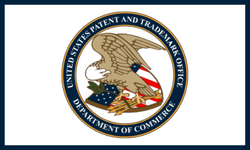You’ve developed a wonderful new product. The world will soon be your oyster. But when can you start selling your product? Can you sell your new product before you file a patent application?
Before the Leahy-Smith America Invents Act (‘AIA’) became law in 2011, the answer was clear.
OLD LAW:
A person shall be entitled to a patent unless…the invention was…on sale in this country, more than one year prior to the date of the application for patent in the United States. 35 USC 102(b) (2006 ed).
This prohibition was known as the ‘on-sale bar’ and the one-year period of time was known as the ‘grace period.’ Under the pre-AIA on-sale bar, test marketing was fine – the inventor had the one-year grace period after her first sale or offer of sale to file a patent application. If she missed that deadline and filed her application too late, then her patent rights were lost forever – she could not obtain a valid patent no matter how wonderful her invention was. Harsh, but clear.
Unfortunately, that’s not the law we live with today. Here’s the same statute as modified by the America Invents Act, in relevant part.
NEW LAW:
A person shall be entitled to a patent unless…the claimed invention was…on sale or otherwise available to the public before the effective filing date of the claimed invention… .
Exceptions…
A disclosure made 1 year or less before the effective filing date of a claimed invention shall not be prior art to the claimed invention…if…the disclosure was made by the inventor or joint inventor… (37 USC 102(a) and (b) (Emphasis supplied).
Under the new law, any sale or offer of sale of the invention prior to filing the patent application IMMEDIATELY terminates patent rights, unless the exception applies. If the exception applies, then the inventor has the same one year grace period as the old law.
But does the grace period exception apply to the inventor’s sale of her product?
The exception applies to a ‘disclosure’ made by the inventor or a joint inventor. In the only Supreme Court case to address the on-sale bar in the last 24 years, the Court in Helsinn Healthcare v Teva Pharmaceuticals concluded that under both the old law and the new law disclosure is irrelevant to the on-sale bar and even undisclosed, secret sales trigger the loss of patent rights. The Helsinn Court did not specifically address the grace period, but we know that disclosure, crucial to the exception, is unimportant to the on-sale bar. Under the new law, a sale of the invention may IMMEDIATELY terminate patent rights with no grace period. The new law is, at best, ambiguous. The bottom line? Even harsher than the old law and not clear at all. This is the kind of ambiguity that can surprise invention owners, kill patents and destroy investments.**
But will every sale of the invention trigger the on-sale bar?
Here we have a bit more guidance from the courts. The Supreme Court in Pfaff v Wells Electronics stated that to trigger the on-sale bar, the sale must be a “commercial sale” and the invention must be “ready for patenting.” The philosophy is that once an invention is complete, waiting to file a patent application would unjustly extend the patent monopoly. From Pfaff and succeeding cases, a sale is ‘commercial’ if it is for the purpose of making money. If the purpose of the sale is for the further development and testing of the invention, then the sale is ‘experimental’ and not ‘commercial.’ The Federal Circuit explored the idea of experimental sales in the recent case of Sunoco Partners v U.S. Venture. The court concluded that a sale of a blending system using a new technology was a commercial sale and the testing of the system provided in the contracts related to acceptance of the machine by the buyer and not to experimentation by the seller. The on-sale bar killed the patent in Sunoco Partners.
As an example of an experimental sale, say that I offer to sell you a beta version of a self-driving system for an automobile. You agree to upload all of the driving parameters detected by sensors during the beta test period, which I will use to improve my software and hardware. This is likely an ‘experimental sale’ and likely would not trigger the on-sale bar.
The second of the Supreme Court’s requirements to trigger the on-sale bar is that the invention is “ready for patenting.” This means that the invention owner has actually successfully made or used the invention or that the invention owner has developed the plans for the invention to the point that a knowledgeable person could make and use the invention. The logic here is that the invention owner cannot file the patent application until it has enough information to file and should not be penalized for a sale before there’s an invention.
As an example of ‘ready for patenting,’ say that I launch a KickStarter campaign offering to sell you a self-driving system that I intend to develop for an automobile, but that I don’t have yet. This invention likely is not ‘ready for patenting’ and the sale likely would not trigger the on-sale bar.
Argh, you say. What’s a careful invention owner to do? The easiest answer is: don’t sell or offer to sell any product containing an invention until AFTER you file a patent application. Follow this simple rule and you will never have an issue with the on-sale bar.
**The USPTO has chosen to interpret the term ‘disclosure,’ without authority or support, to mean that the 1-year grace period applies to all the patent bars, including the on-sale bar. See MPEP section 717, sixth paragraph. This author believes that the USPTO’s interpretation removes the term ‘disclosure’ from the statute, which is wishful thinking, will likely be ignored by the courts, and is likely to mislead inventors and patent practitioners. In short, the USPTO is smoking something.


